
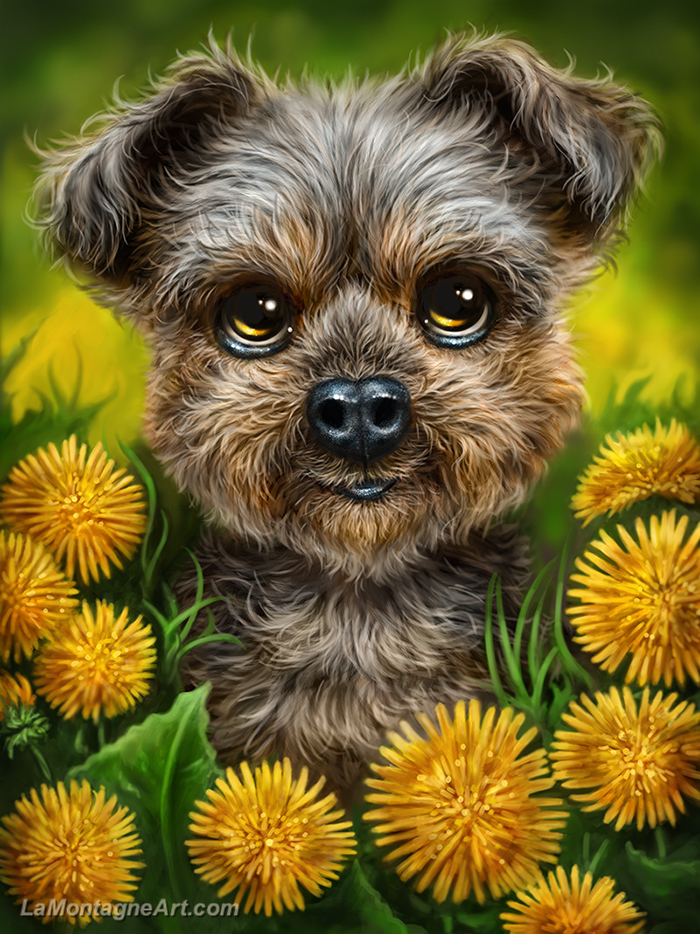
I’m happy to share my latest custom painting of a cute little fellow named Lucas.
This was a memorial piece. That anyone commissions me to paint their furry-faced loved one to help them with their grief, and eventually turn sadness into happy memories, isn’t something I take lightly.
Sarah has been following my work for some time. In a recent issue of A Wilder View, I mentioned and shared my commission of Santé from a couple of years ago, prompting Sarah to ask about a painting of her little guy in my style.
She sent one photo with her inquiry, and I was instantly smitten with his little face. Lucas was a tiny little Yorkie who looked like a real-life cartoon character. I tempered my enthusiasm, wanting to see more photos and discuss Sarah’s expectations.
People often think that commissions are cut and dry. Here’s a photo, paint my dog. Several times in my career, I’ve had people ask for a very short deadline and balk that a custom painting costs more than $50. It’s one of the main reasons I turn down more commissions than I accept.
But when I’m working with a client who not only knows my art style and realizes the amount of time and effort a custom painting takes, it’s a thoroughly enjoyable experience. Sarah was a pleasure to work with.

For the first month, before I even began sketching, she sent me several photos in different poses. Lucas often looked different from one photo to the next because of the length of his hair, age, and the colouring that had changed throughout his life. With these variables, I needed to narrow down how Sarah wanted him to look. Short or long hair? More grey hair than tan? Puppy, senior, or somewhere in between?
Communication is key with every commission. I can’t do my best work if I don’t know which details are essential to the client.
Finally, Sarah suggested an outdoor setting and mentioned that she had wanted to take him for a photo shoot with dandelions but never got to do that. I thought posing him in that environment sounded like a wonderful idea.
When I sent the final image at the beginning of August, Sarah responded, “I’m overwhelmed with your portrait of my little man, his eyes and all that hair! His cute little head tilt and the hint of a smile as he sits in the flowers is just perfect. I showed my Mom and she said she had a smile through tears and that was me too. What an incredible amount of work, I probably can’t really imagine but it is very obvious in the finished image!”
However…
“There isn’t anything wrong, but I am wondering how difficult it might be to make a small change to Lucas’ nose? He had a wee dimple at the top centre that gave it even more of a “heart” shaped appearance.”
I had painted Lucas with more of a rounded nose at the top like I do with some of my whimsical wildlife images. It’s often a feature of my cartoony style. But going back through the reference images, I saw that dimple detail in all the photos. I just didn’t put the weight into it that someone who knew Lucas would. In my opinion, that means I got it wrong.
Back to the drawing board, I corrected my mistake, and Sarah was pleased when I sent the revision. I’m genuinely relieved she mentioned it. Had she not, I expect it would be a distraction each time she looked at the painting, thinking, ‘Too bad he got the nose wrong.’ Though Sarah and her spouse live near Edmonton, and I could ship the painting, she and her Mom had planned for a couple of nights in Canmore this past weekend, and I delivered the 18”X24” stretched canvas to their hotel. I took them outside into the sunlight for the reveal so they could see the bright colours and the details. Whether on paper, metal or canvas, my work always looks better in print than on a screen. People have been saying that to me for years. Sarah said it, too.
Though Sarah and her spouse live near Edmonton, and I could ship the painting, she and her Mom had planned for a couple of nights in Canmore this past weekend, and I delivered the 18”X24” stretched canvas to their hotel. I took them outside into the sunlight for the reveal so they could see the bright colours and the details. Whether on paper, metal or canvas, my work always looks better in print than on a screen. People have been saying that to me for years. Sarah said it, too.
She started to cry and finally managed, “It’s him.”
I don’t get better compliments than happy tears.

Thanks again for trusting me with this most personal of paintings, Sarah. I’m so pleased you’re happy with it.
I’m working on another commission that I hope to finish soon. With my current workload, they’re taking a little longer than usual, but thankfully, Sarah and my other client didn’t have deadlines. That’s an important factor when I consider taking on a custom piece, whether I can deliver what I promise.
If you’d like to learn more about what’s involved with hiring me for a custom pet portrait in my whimsical style, please visit my Commissions page.



 I dropped off a large print and sticker order to the
I dropped off a large print and sticker order to the 
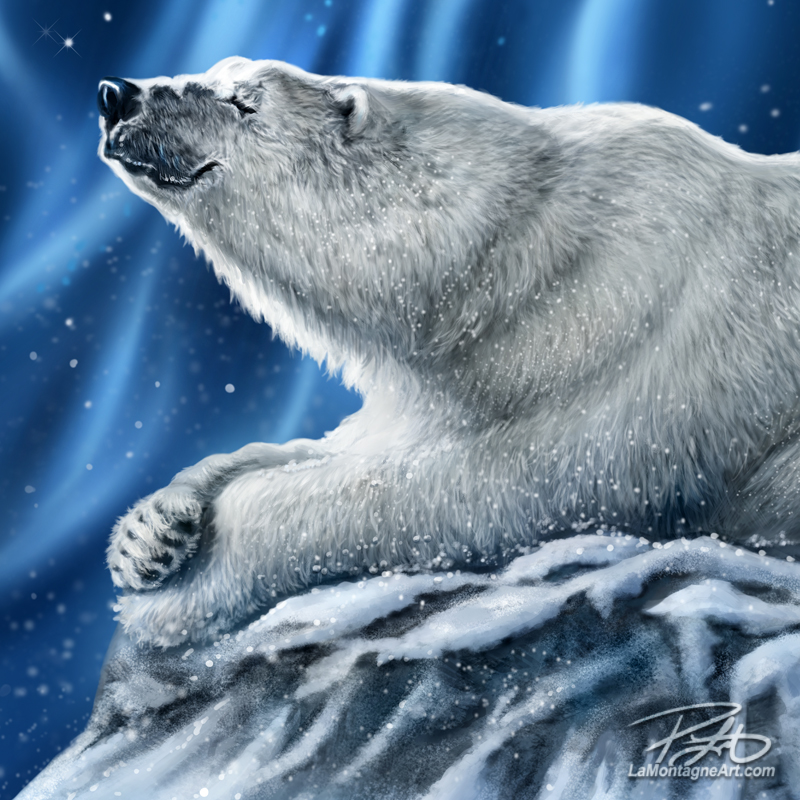 Titles are challenging. While I prefer to come up with something funny or endearing for each painting, I also need to consider my clients and their customers. Simple identifying titles are often better, especially as my portfolio grows. I already have two polar bear paintings
Titles are challenging. While I prefer to come up with something funny or endearing for each painting, I also need to consider my clients and their customers. Simple identifying titles are often better, especially as my portfolio grows. I already have two polar bear paintings 

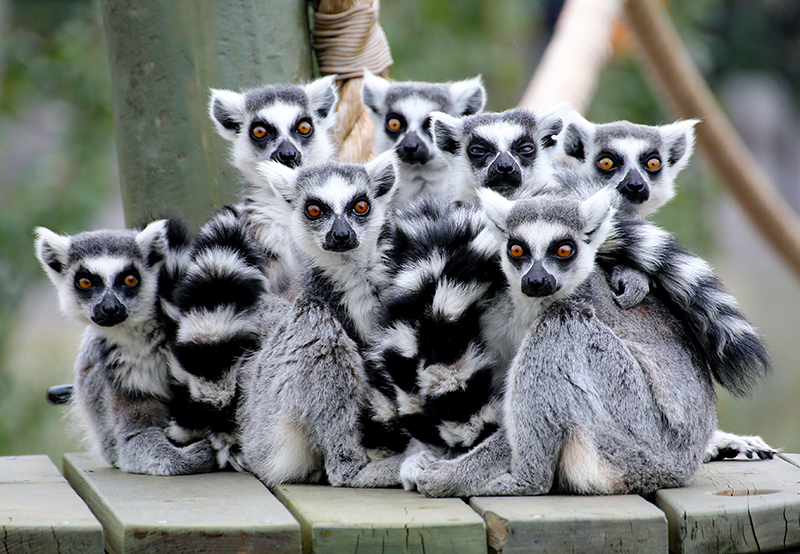 This photo always makes me chuckle. That evil-looking stare straight down my lens, the squinting focused eyes, the chunk missing from her ear. She reminds me of a gangster saying, “Come closer. See what happens.”
This photo always makes me chuckle. That evil-looking stare straight down my lens, the squinting focused eyes, the chunk missing from her ear. She reminds me of a gangster saying, “Come closer. See what happens.”
 I’m happy with how it’s turned out so far, and I’m also hoping to offer the finished piece as a puzzle later this year.
I’m happy with how it’s turned out so far, and I’m also hoping to offer the finished piece as a puzzle later this year. So, when I’m working on several paintings at once and more involved pieces featuring multiple animals or more detailed backgrounds, paintings that take much longer than a whimsical head and shoulders portrait can be uncomfortable. It feels like I’m not getting enough done.
So, when I’m working on several paintings at once and more involved pieces featuring multiple animals or more detailed backgrounds, paintings that take much longer than a whimsical head and shoulders portrait can be uncomfortable. It feels like I’m not getting enough done. The finished piece will be a lot more detailed than the images in progress you see here. But the vision for what I’m trying to achieve is clear in my mind, and I’m having fun discovering each of these faces.
The finished piece will be a lot more detailed than the images in progress you see here. But the vision for what I’m trying to achieve is clear in my mind, and I’m having fun discovering each of these faces.
 In the late nineties, I worked different jobs at a hotel in Banff for five or six years, from waterslide attendant and manager to front desk agent, night auditor and accounting clerk.
In the late nineties, I worked different jobs at a hotel in Banff for five or six years, from waterslide attendant and manager to front desk agent, night auditor and accounting clerk. I’ve always liked ravens, and I talked a bit about that in my
I’ve always liked ravens, and I talked a bit about that in my 

 I’ve taken hundreds of meerkat photos at the
I’ve taken hundreds of meerkat photos at the 
 When it came to meerkats, I’ve long had the idea to paint a whole troop of them, so painting a solitary meerkat wasn’t on the radar, or I’d do the occasional sketch painting, but never a finished production piece. But just like the three giraffes I painted for my
When it came to meerkats, I’ve long had the idea to paint a whole troop of them, so painting a solitary meerkat wasn’t on the radar, or I’d do the occasional sketch painting, but never a finished production piece. But just like the three giraffes I painted for my 
 Winter reared its ugly head this week in Alberta, and I’m already feeling the blues. It happens every year, but painting a happy face usually puts me in a better mood. Grizzly Bearapy. It’s an effective prescription.
Winter reared its ugly head this week in Alberta, and I’m already feeling the blues. It happens every year, but painting a happy face usually puts me in a better mood. Grizzly Bearapy. It’s an effective prescription.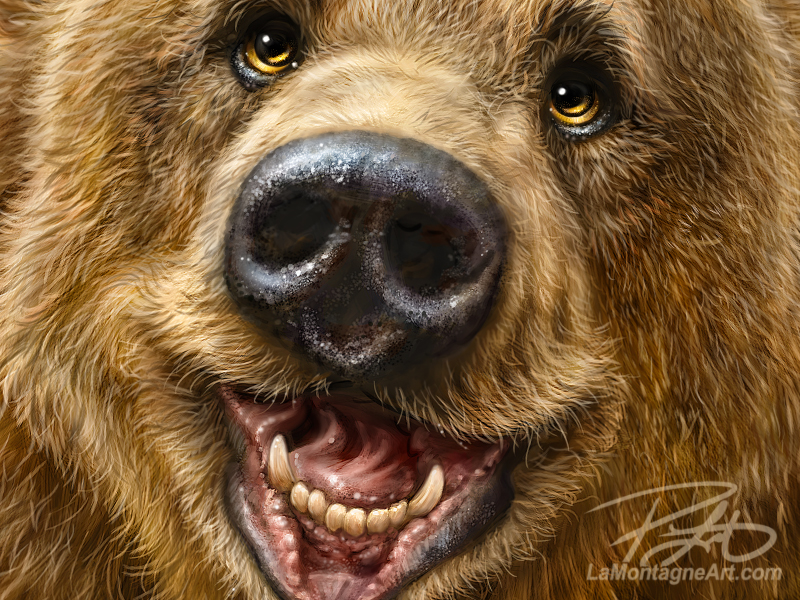 Though this painting was fun to do, as are most of my whimsical wildlife pieces, it was a commercial decision. It’s the first in a series of paintings I’m creating to promote my work to new licensing clients. It’s also another painting for the bear book.
Though this painting was fun to do, as are most of my whimsical wildlife pieces, it was a commercial decision. It’s the first in a series of paintings I’m creating to promote my work to new licensing clients. It’s also another painting for the bear book.
 While I’m not a big fan of the season, I love winter colours, the blues, greys and whites. Seems like I’m on a bit of a
While I’m not a big fan of the season, I love winter colours, the blues, greys and whites. Seems like I’m on a bit of a 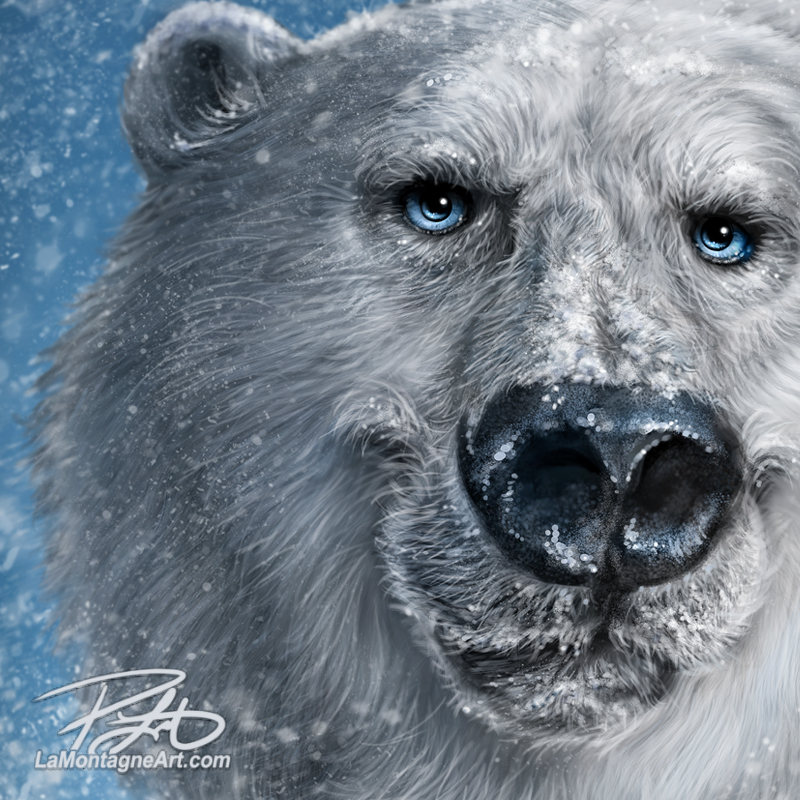 My friend
My friend 
 One of the challenges with a square format painting is that I need to crop it for my standard 11”x14” print, either vertical or horizontal. I tried both layouts, and vertical was the clear winner. Of course, you can always order the original square format as a canvas or metal print.
One of the challenges with a square format painting is that I need to crop it for my standard 11”x14” print, either vertical or horizontal. I tried both layouts, and vertical was the clear winner. Of course, you can always order the original square format as a canvas or metal print. 
 This cool cat began as a design I pitched for a puzzle license that didn’t work out. But since I liked the idea, I decided to paint it anyway. It was challenging, and I spent a lot of time on the detail. I’m pleased with the finished piece.
This cool cat began as a design I pitched for a puzzle license that didn’t work out. But since I liked the idea, I decided to paint it anyway. It was challenging, and I spent a lot of time on the detail. I’m pleased with the finished piece.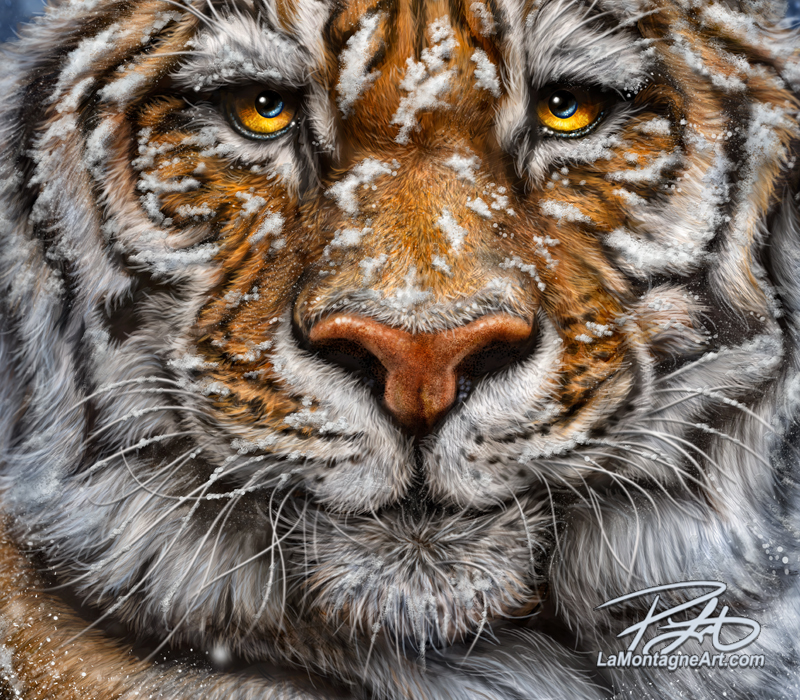 This new Winter Tiger will make a nice addition to my
This new Winter Tiger will make a nice addition to my  These next puzzles will also be 1000 pieces since many have asked for those. My recent
These next puzzles will also be 1000 pieces since many have asked for those. My recent 
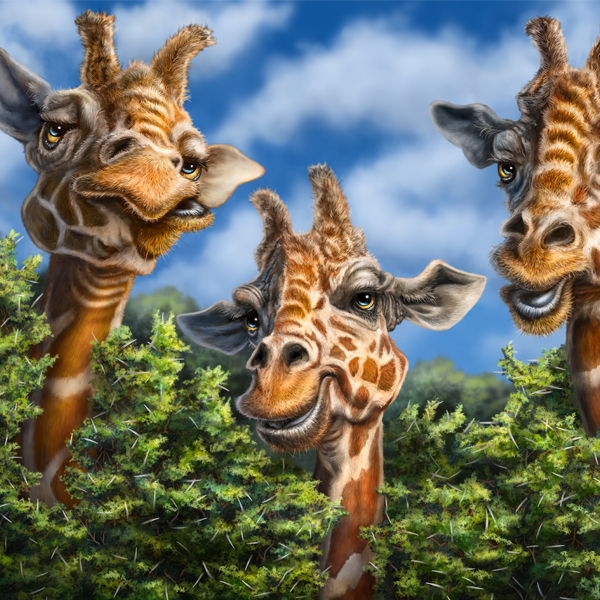
 While labour-intensive, this painting wasn’t especially difficult. There weren’t any parts of it where I worried I might not have the necessary skills. That comes from experience, the feeling that “it’ll take a while, but I got this.”
While labour-intensive, this painting wasn’t especially difficult. There weren’t any parts of it where I worried I might not have the necessary skills. That comes from experience, the feeling that “it’ll take a while, but I got this.” I began the project with several sketches and refined those into this mockup.
I began the project with several sketches and refined those into this mockup.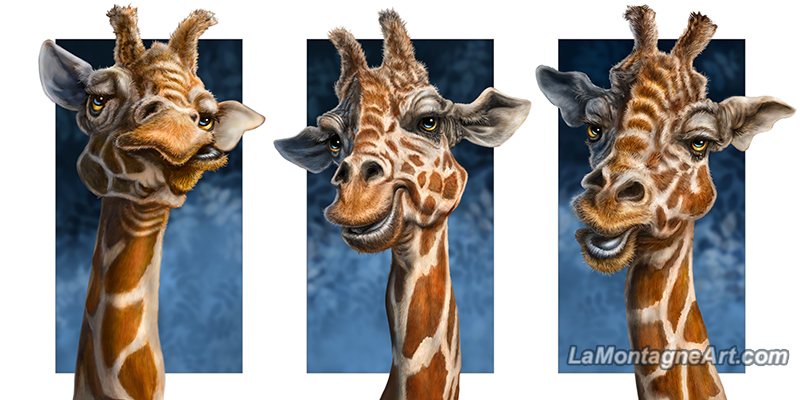 Then I painted the individual giraffes, creating three expressions different enough to be their own characters, but I still had to match the colours, light and shadow so they belonged together in the scene. Each giraffe could have been a single painting.
Then I painted the individual giraffes, creating three expressions different enough to be their own characters, but I still had to match the colours, light and shadow so they belonged together in the scene. Each giraffe could have been a single painting. Painting the environment was the most challenging part. I could have gone with generic-looking green deciduous leaves, and most people wouldn’t have cared. Even though my style of art is whimsical, and I take liberties with exaggeration and expression, I still try for accuracy in the anatomy and environment.
Painting the environment was the most challenging part. I could have gone with generic-looking green deciduous leaves, and most people wouldn’t have cared. Even though my style of art is whimsical, and I take liberties with exaggeration and expression, I still try for accuracy in the anatomy and environment. I don’t use any colour dynamics in my brushes. I prefer to pick and choose colour while painting, sampling from adjacent colours to get a better blend.
I don’t use any colour dynamics in my brushes. I prefer to pick and choose colour while painting, sampling from adjacent colours to get a better blend. These new brushes allowed me to create a solid foundation, but it looked flat and lifeless until I spent several hours painting light, shadow, and detail to achieve the finished result.
These new brushes allowed me to create a solid foundation, but it looked flat and lifeless until I spent several hours painting light, shadow, and detail to achieve the finished result. New digital artists often get obsessed with buying brush packs, thinking that’s all they need to achieve the same look as more experienced artists. But professional tools won’t provide a shortcut past the years of work it takes to become good at anything.
New digital artists often get obsessed with buying brush packs, thinking that’s all they need to achieve the same look as more experienced artists. But professional tools won’t provide a shortcut past the years of work it takes to become good at anything. While I called it Long Neck Buds, someone could easily interpret them as two parents and a child. People often tell me what one of my paintings is ‘thinking’ or what their expression means, and I wouldn’t dream of contradicting them. If the art makes them feel something or triggers their imagination, that’s good enough for me.
While I called it Long Neck Buds, someone could easily interpret them as two parents and a child. People often tell me what one of my paintings is ‘thinking’ or what their expression means, and I wouldn’t dream of contradicting them. If the art makes them feel something or triggers their imagination, that’s good enough for me.

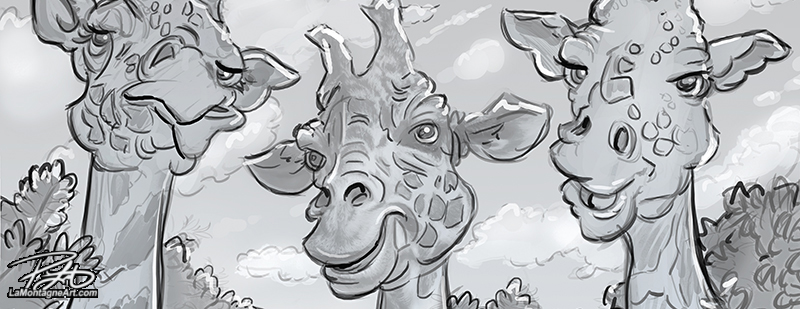
 The challenge with this piece is to make each character different from the others but with the same level of detail and colour palette.
The challenge with this piece is to make each character different from the others but with the same level of detail and colour palette.